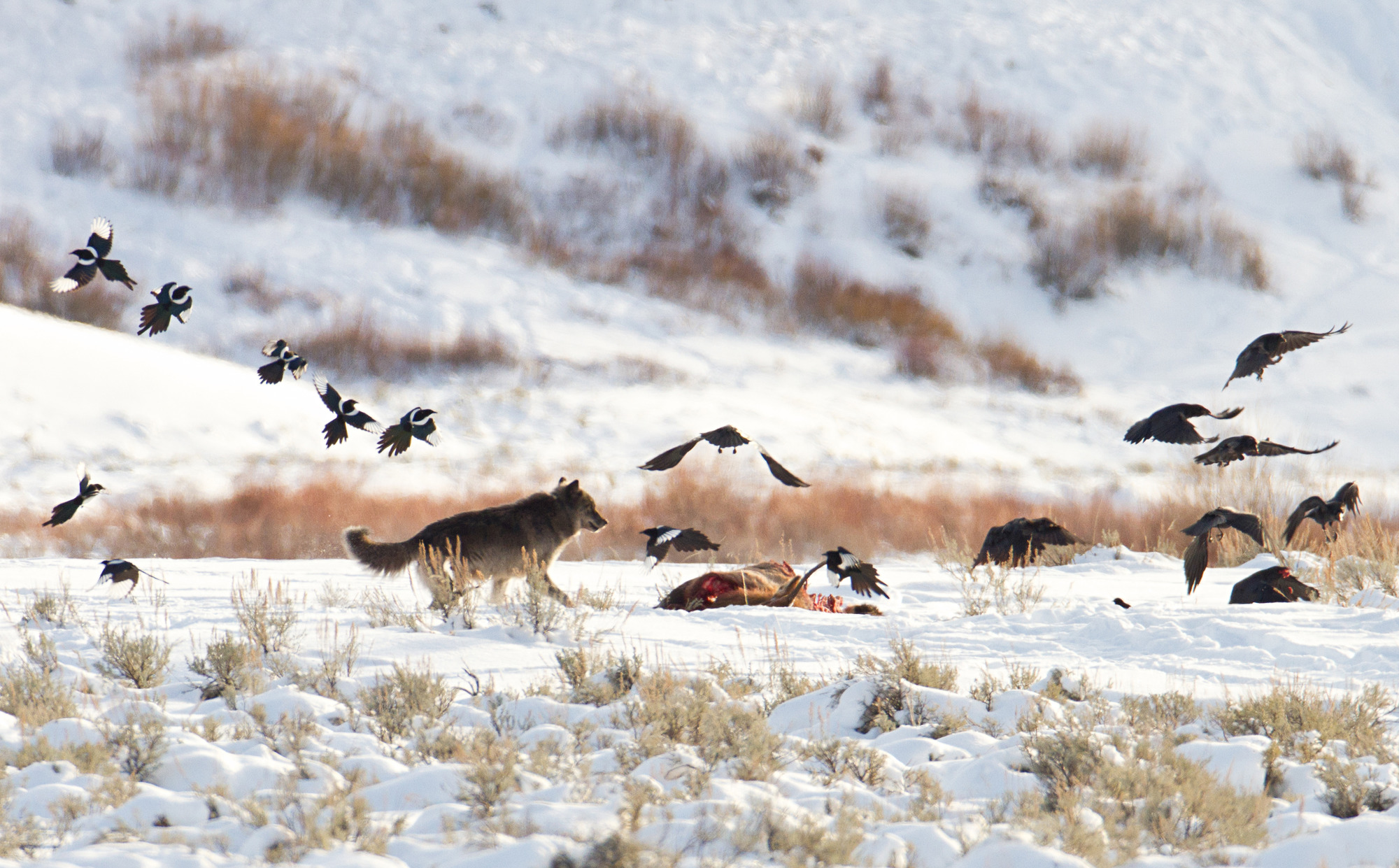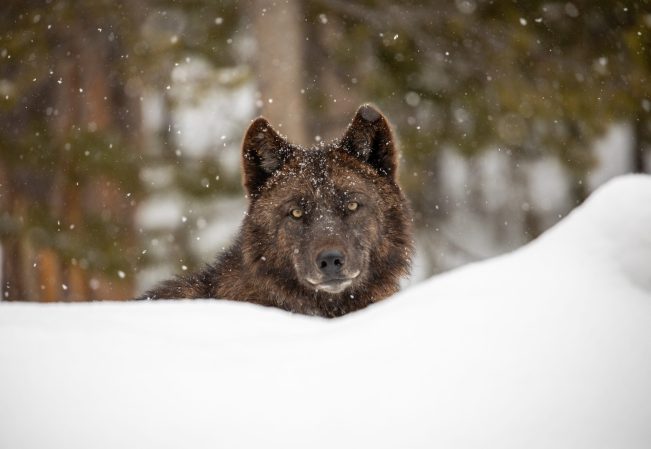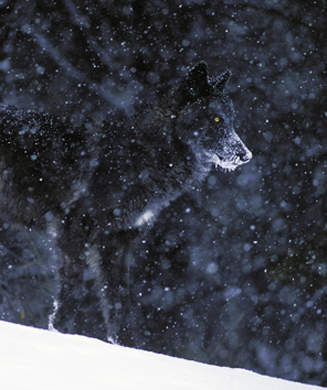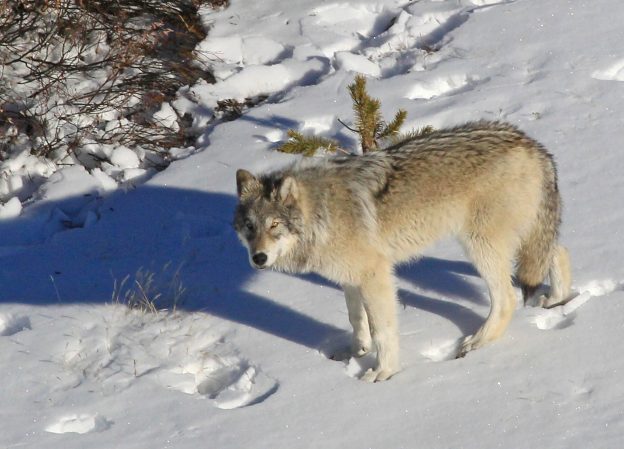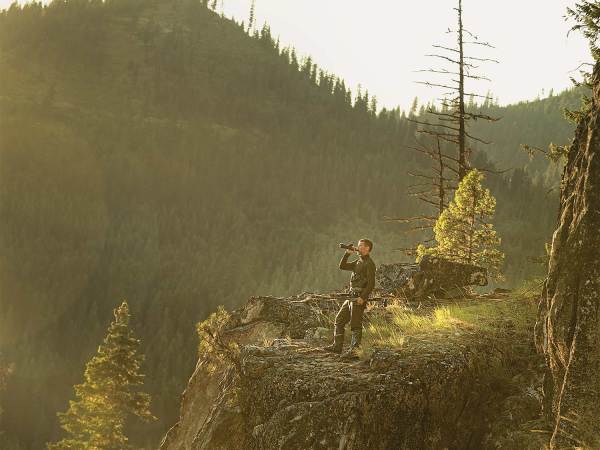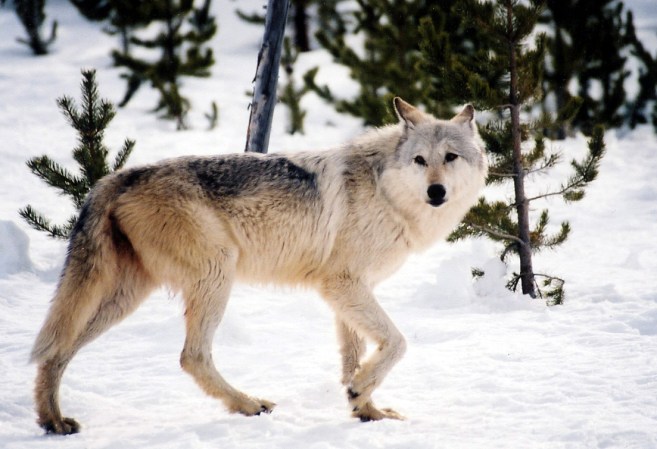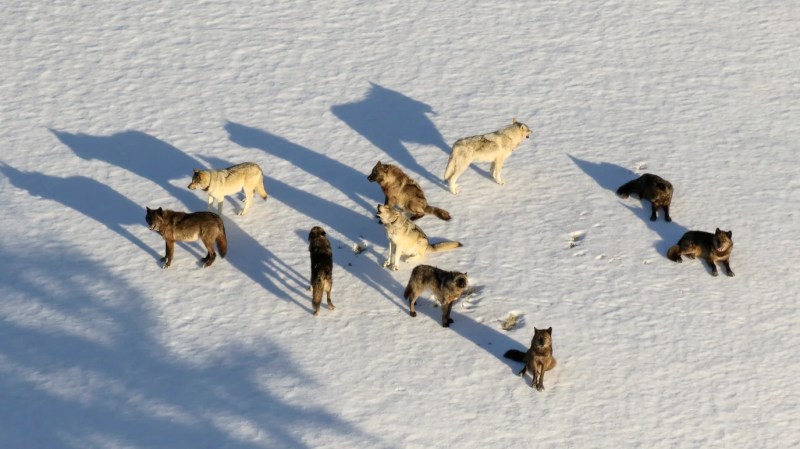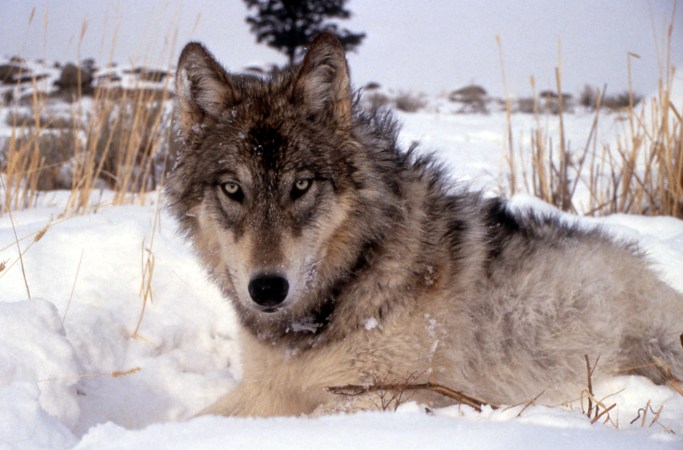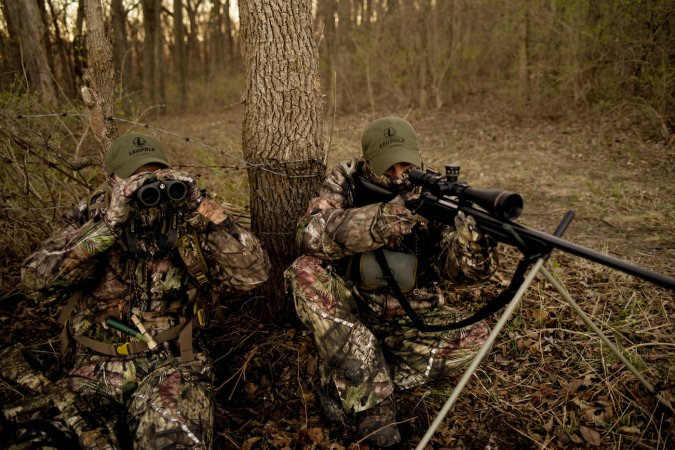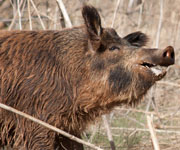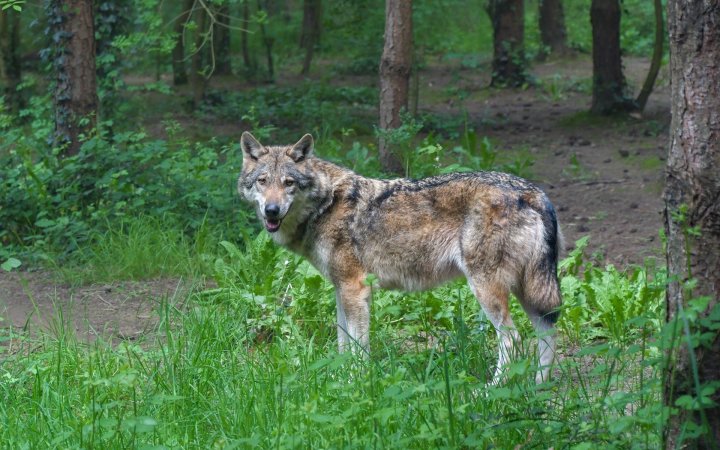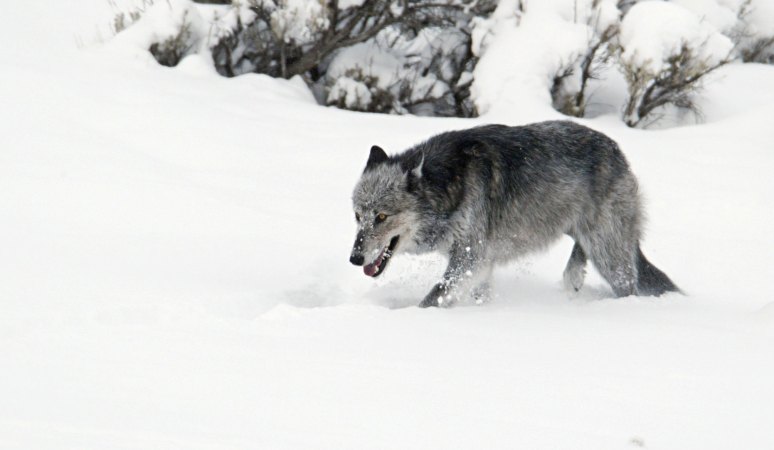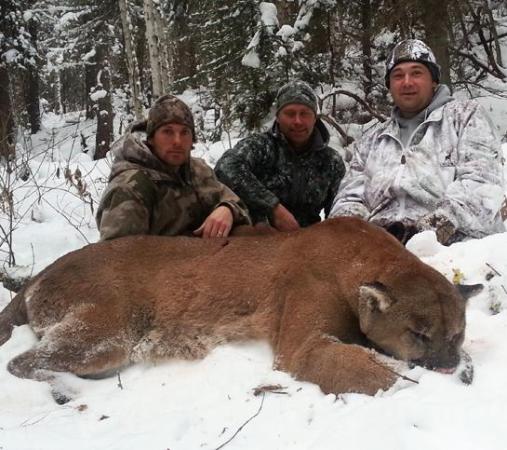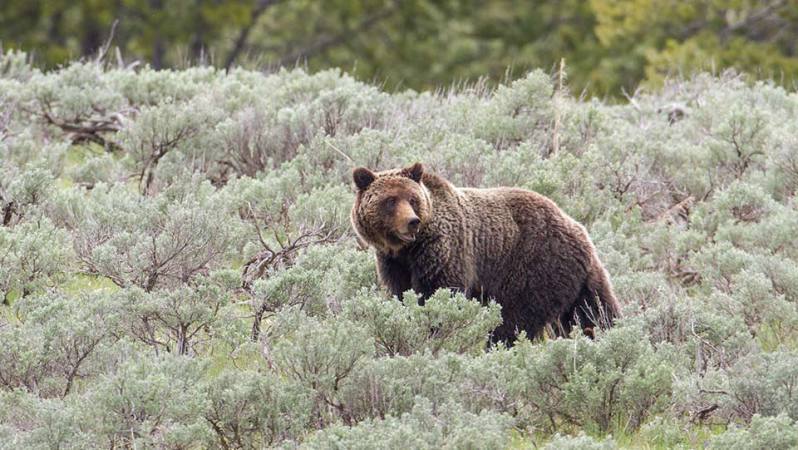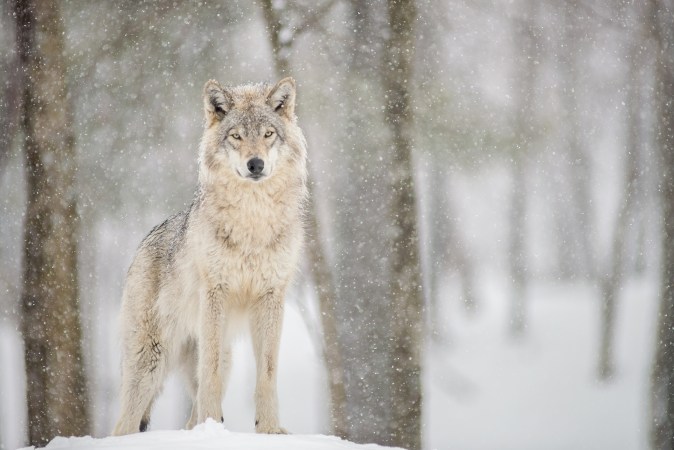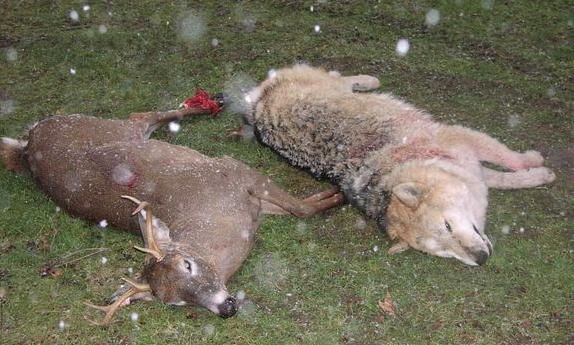Justin Webb took a trip back in time last fall, on the Forest Service roads in northern Idaho that he had traveled as a kid back in the 1980s.
Back then, every pull-out and trailhead was occupied with an elk camp. There were pickup campers, sooty canvas wall tents with lodgepole frames, and Army surplus pup tents set up in the dark and for the first time by hunters from the city.
The Outdoor Life Podcast: The Wolf Wars are Getting More Extreme
“That’s Packsaddle Mountain,” says Webb, referring to a series of ridges generally east of Lake Pend Oreille in Idaho’s Panhandle National Forest. “At one time, the world-record bull came off that mountain, and when I grew up you couldn’t find a place to park there. Everybody was elk hunting, and nearly every camp had an elk hanging from a meat pole.”
But last fall, when Webb drove the 75-mile loop up and over Packsaddle, all he found were empty campsites, most overgrown with fireweed and regen lodgepole. No hunting camps. No hunters. No elk. Webb blames wolves.
“When I started elk hunting northern Idaho, you could legitimately expect to kill a good bull every year if you hunted hard and knew what you were doing,” says Webb. “But now, the only way to consistently kill elk is to know a rancher with river-bottom hay fields. The elk are still around, they’ve just been pushed off the public land onto those valley fields. There are no longer elk on public land in northern Idaho, and I blame wolves for that.”
Webb is the founder and executive director of Foundation for Wildlife Management, based in the Panhandle town of Ponderay, surrounded on all sides by National Forest land. It’s a conservation organization with a different take on the traditional banquets-for-habitat model. Webb’s group raises money to pay trappers and hunters for expenses accrued hunting wolves, which he says are running rampant across northern Idaho.
Critics call this an old-fashioned predator bounty, and say that states that allow it—Idaho and Montana so far—are abrogating their duties to sustainably manage the species. But Webb says compensating people who pursue wolves is the only way to get their numbers in balance with their prey base, primarily elk.
“Once we realized how prevalent wolves were, and how ineffective hunters are at controlling their numbers, we recognized that trapping was going to be the only way to effectively manage them,” says Webb. But a serious trapper is in it for the fur purse, and wolf pelts don’t fetch enough money to make it worthwhile. “So we said, what will it take—monetarily—to keep someone who is productive at trapping wolves in an area to keep doing just that?”
Foundation for Wildlife Management pays trappers and hunters up to $1,000 for every wolf they kill. It’s a reimbursement program; trappers and hunters submit receipts and get repaid for the gas, gear, and grub they expend in pursuit of wolves. The program has moved into Montana after the state legislature earlier this year passed bills similar to Idaho’s that allow wolf hunters and trappers to be compensated for “effort.” Other freshly minted laws allow wolves in Montana to be hunted at night, baited, and snared. Montana’s Fish and Game Commission meets this week to consider how to implement those wolf-related laws and possibly extend the season to match Idaho’s, which is year-round on private land in the Panhandle.
The commission meeting comes on the heels of a petition by 70 environmental groups to return wolves to the Endangered Species Act. The petition, speared by Western Watersheds and submitted to the U.S. Fish & Wildlife Service two weeks ago, cites “inadequate regulatory mechanisms” in Idaho, Montana, and Wyoming in its request to re-list the Western population of gray wolves as endangered.
Wolves were removed from federal management as endangered species back in 2011 and management was handed over to the states. Since then, hunting seasons have been established in Idaho, Montana, and Wyoming, and packs have expanded into Washington, Oregon, California, and most recently Colorado. Despite that expansion, wolves “remain perilously close to extinction in many western states,” says Erik Molvar, executive director of Western Watersheds. “The handful of states surrounding Yellowstone National Park are now driving the larger populations toward extinction by ramping up wolf killing and stripping away hunting and trapping regulations.”
The petition to re-list was followed by an opinion piece in the Aug. 3 Washington Post penned by former director of the U.S. Fish & Wildlife Service Dan Ashe in which he described “an epidemic of cruelty” toward wolves that he says is undoing efforts to conserve wolves. Among the examples of “ecocide” that he cited: the compensation program run by Webb’s group.
In his opinion piece, Ashe called on the Interior Department to immediately suspend hunting on federal lands and to move to formally return wolves to the Endangered Species List.
With this as the backdrop—an unease among Western hunters that we have too many wolves on the landscape, and a coordinated campaign to return wolves to federal protection—it’s worth considering: what is the state of the gray wolf in America, and why do these apex predators stir so much passion?
Wolf Population Estimates are Used as Leverage
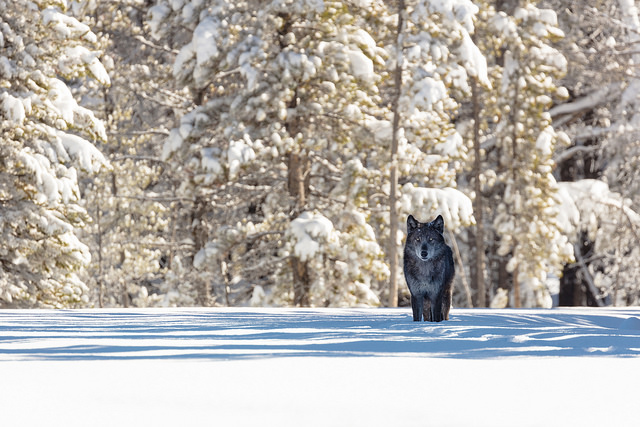
One reason we struggle with managing wolves is that we’re new to it, says Tony Schoonen, chief executive officer of the Boone and Crockett Club, a conservation organization based in Missoula, Mont., that advocates for sustainable management and fair-chase hunting of big-game animals.
“We do not know how to manage them, and we have never tried to manage them before,” he says. “We drove them out of the Lower 48, then we brought them back under federal protections. They are elusive and prolific and are nowhere near extinction. This brings up the real question: can we be patient, trusting, and calm enough with each other to figure this out? We need to get back to the professionals using science to avoid over- or under-management.”
But it’s not just in the West where wolves are so polarizing and where their management is being questioned. In the Great Lakes, whose growing population of gray wolves was removed from federal protections in 2020, Wisconsin hunters killed 220 wolves in the first three days of the week-long season this past February. That was 82 percent above the quota, and caused wolf advocates to call for reduced quotas next year or even suspending or shortening the hunting season. However last week the state Natural Resources Board approved a 300-wolf quota for the 2021-22 season. This is despite a recommendation from state biologists of a 130-wolf quota.
In Colorado, voters last fall narrowly passed a citizens initiative that directs the state’s Parks and Wildlife Commission to bring back wolves to the Western Slope by 2024. In Washington State, wolves are listed as endangered, but in Oregon, management plans call for when lethal removal—including managed hunts—can take place as populations and pack distribution increase.
Because population and harvest numbers are used by both sides in support of their position, it’s worth taking a close look at the number of wolves in America, and where they occur. But first, a very brief history lesson.
Wolves once roamed most of the continental United States, but their predatory nature wasn’t compatible with ranching or settlement. Generally classified as unprotected predators, they were systematically killed through trapping, unregulated shooting, poisoning, and aerial gunning. In some cases, bounties were used to encourage harvest. Gray wolves were listed as endangered species in 1974.
Wolves persisted in the Northern Rockies as well as in remote corners of the Great Lakes region. But in the mid 1990s, 31 Canadian wolves were released inside Yellowstone National Park. That “experimental” population is the seed stock for many of the Western wolves now expanding their range well beyond the borders of Yellowstone.
As of 2018, the last year for which the U.S. Fish & Wildlife Service has published data, a minimum of 4,600 wolves existed in the Western Great Lakes region, including about 800 in Michigan, 2,500 in Minnesota, and about 1,200 in Wisconsin. In the Western U.S., the Service counts a minimum of 3,123, including over 1,500 in Idaho, 1,200 in Montana, and about 350 in Wyoming. But note that these numbers are undoubtedly undercounts, given the reproductive capacity of wolves and the fact that these are minimums, based on observed individuals plus a percentage based on population confidence intervals.
Also note that there’s a sort of gamesmanship taking place with wolf census—not unlike the human census of the United States. Groups that want more wolves, and less hunting, tend to undercount. Groups that want fewer restrictions on hunting tend to overcount. Both use the gray area of the census to bolster their positions.
But even taking those 2-year-old minimums, every region is vastly ahead of the population benchmarks used to “recover” wolves and turn management over to states. That recovery threshold called for a minimum of 15 breeding pairs and 15 packs each in Idaho, Wyoming, and Montana, and a minimum of 1,500 wolves in the Great Lakes region.
The Boone and Crockett’s Schoonen says those “benchmarks” are part of the problem with our national conversation about wolves.
“Those numbers are not written in law or in regulations,” he says. “Those numbers come from recovery plans, and the law does not give recovery plans enough weight to trigger either delisting or re-listing.”
Schoonen says that if the USFWS responds to last month’s petition and proposes to re-list wolves, the agency is required to look at populations and distributions anew, just as they did when they first listed the species.
“The question for FWS is whether the wolf is at risk of extinction. It’s not,” says Schoonen. “If it ever is, we will support the use of the ESA.”
Wolves are Surrogates
Nick Gevock doesn’t think we have a wolf problem. A former conservation director for the Montana Wildlife Federation, Gevock says that the status quo—state agencies managing wolves similarly to how they manage elk and deer—is working just fine.
“In Montana, at least, we have had what I’d call a ‘Goldilocks’ hunt,” says Gevock. “We kill over 300 wolves a year, mostly by elk hunters with a wolf tag in their pcoket. But we need to make sure we have reasonable limits to ensure it’s an ethical fair-chase hunt. We have people who want to eradicate wolves and those who never want to see them hunted. Montana has struck a reasonable balance between maximizing wolf harvest using traditional methods, and making it an equal-opportunity hunt.”
But Gevock says that balance could change with the wolf-eradication bills passed by the legislature and signed into law by Montana’s Gov. Greg Gianforte, who stirred up wolf advocates last winter when he killed a trapped wolf without having completed the requisite trapper-education training. Gevock says this week’s Montana Fish and Game Commission meeting will signal whether the state maintains its equilibrium or joins Idaho in extremely liberal wolf seasons and methods.
“I don’t think we’re in danger of re-listing wolves,” says Gevock. “You have to show harm to the species to justify re-listing. But is the possibility there? Absolutely. The American people have spent millions of dollars to recover this species. Now Montana and Idaho want to pay contractors to shoot them from the air. It harkens back to that eradication mentality that could be justification that the species is in imminent harm” and galvanizes the movement to re-list the predators.
Should Fair-Chase Hunting Ethics Be Applied to Wolves?
Listen long enough to both sides of the wolf debate, and you’ll hear a term used with increasing frequency. Dan Ashe used it in his op/ed piece in the Washington Post, and Schoonen referred to it earlier in this story. It’s “adequate regulatory mechanism,” and it’s used to describe the state’s approach to managing wolves. It actually has the force of law; it’s one of the factors the U.S. Fish & Wildlife Service considers before it hands management authority of a species to state wildlife agencies.
It’s the underpinning for most states’ wolf-management plans, another requirement for de-listing. But Ashe and other advocates for the return of wolves to federal custody maintain that states—namely Idaho and Montana—are abrogating their “adequate regulatory mechanisms” by allowing night-vision hunting, baiting, and bounties.
Ashe is joined by members of a coordinated celebrity crusade to advocate for wolf protections. But even members of the hunting community think that the most permissive methods—baiting, hunting at night, and snaring—may be going too far.
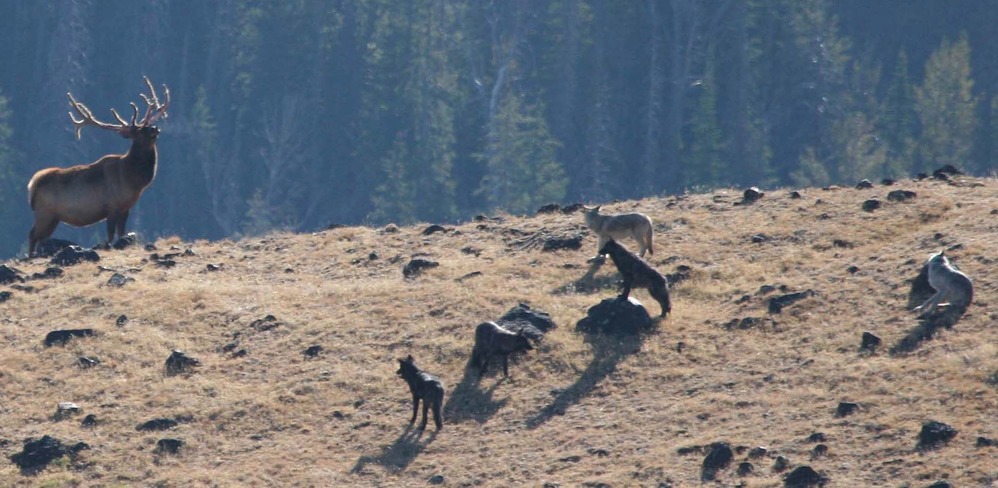
“The club supports state management of wolves as regulated wildlife” and not as predators or varmints that allow unregulated take, says Boone and Crockett’s Schoonen. “First, scientific wildlife management requires regular adjustments to meet biological and social carrying capacities. And second, one of the factors in a listing decision is whether an ‘adequate regulatory mechanism’ is in place. Predator or varmint status is not adequate for wolves.”
While there’s no category for wolves in the Boone and Crockett’s Records of North American Big Game, the club does not consider baiting or hunting at night with artificial lights to be in line with its standards of fair-chase ethics. But Schoonen notes that the club is not opposed to expanded means and methods of hunting “as they are sometimes needed to achieve goals for population control or hunter opportunity.”
“Our preference is that legislatures and commissions classify wildlife and that agencies set seasons, quotas, and means and methods,” says Schoonen. “In Montana and Idaho this year these decisions have been made in the legislature. On the other end of the spectrum, a voter-passed ballot initiative in Colorado requires that state to reintroduce wolves, against the state wildlife commission’s recommendations. We don’t believe this is the best way to manage wildlife – management needs to come from wildlife professionals, not ballot initiatives or legislation. The wide spectrum of positions driving political decisions means there are big problems with the wolf issue.”
Back in Idaho, Webb says the alternative to active, year-round hunting and trapping of wolves is easy to see. It’s visible in elk dynamics in the northern half of Idaho.
“Right now, the state of Idaho claims there are more elk in the state than ever and elk harvest rates are higher than ever. That’s because elk have ceased being mountain animals. They’ve been pushed out of the mountains by wolves. Our backcountry elk—the ones I grew up hunting—don’t live there anymore because they’ve been pressured constantly by wolves. I don’t want to go shoot an elk out of an ag field from a treestand. To me, that’s not elk hunting.”
Webb thinks states will have to apply even more pressure to wolves as they get established in traditional big-game areas.
“Our total recovery goal was 300 pairs, region-wide,” he says. “Now we’re at 3,500 wolves. We’ve never taken the number of wolves that were born in any given season, which means that every year we have more wolves, not fewer. The number one killer of wolves in Idaho is wolves. They’re running out of room, and packs are fighting other packs for territory.”
Webb thinks that if states apply conservative “adequate regulatory mechanisms” to wolves, then the predators will expand to such a degree that their prey base—the West’s iconic elk herds—will collapse.
“I want my kids to experience elk camp the way I did,” he says. “That’s never going to happen unless we get a handle on wolf numbers and manage them aggressively.”

